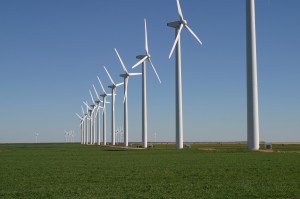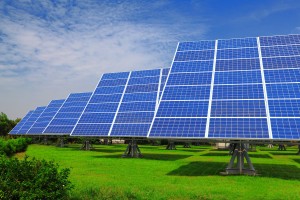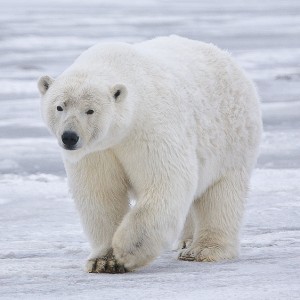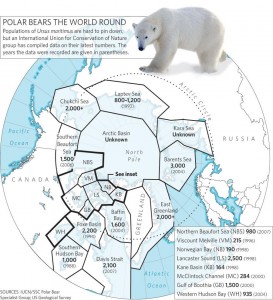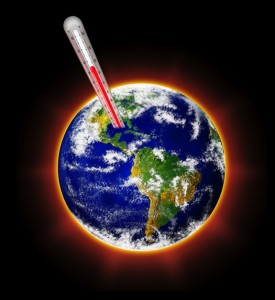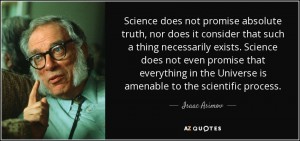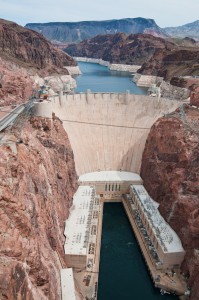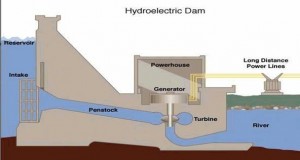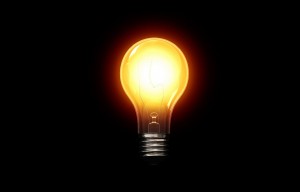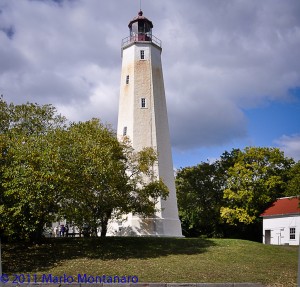“Magical thinking is the belief that one’s own thoughts, wishes, or desires can influence the external world. It is common in very young children. A four-year-old child, for example, might believe that after wishing for a pony, one will appear at his or her house.” (2)
So now we have it; a proposal by Congressional Democrats called the “Green New Deal” (1), for a sweeping agenda which will save the world from climate change and cure all the ills of society in one fell swoop.
Whether this resolution is awe-inspiring or ridiculous is likely in the mind of the beholder, but at the very least it is gargantuan and sweeping.
I’ve been told that I don’t suffer fools well. For a long time now we have been hearing sweeping proposals of “renewable energy” as the panacea for many problems. Proponents of this “energy” almost never bother with the details. Why? Because the details do not work. Their ideas are not simply magical thinking; they are wrong. They are absurdly wrong, yet proponents continue their mantra as if by saying it over and over again it will become real. Let’s put this nonsense to rest.
A few years back, I wrote some articles on alternative energy. They can be found here The Story of Alternative Energy and here Alternative Power Part II . These articles elaborate on what follows. For more details and references, I suggest reading them.
At this time, I am going to review some of that information and look into a few other items mentioned in the “Green New Deal” resolution.
Before going further, let’s remember this number: 10000 Gigawatts. This also can be stated as 10 million Megawatts, but we will stick with the former because it is easier to understand. What is this? It is the amount of electricty used in the United States every day: 10000 Gigawatts.
Alternative energy – Wind Power
Wind turbines are big, expensive, and largely inefficient. The most common commercial wind turbine in the US is built by General Electric. It has blades 116 feet long, and stands on a 212 foot high tower. It weighs about 235 tons. They cost between $1.5 and $2.5 million dollars each, with a total construction cost of $3 to $4 million apiece.
Energy companies will tell you this turbine will power around 332 homes, but if you do the actual math as I did in my previous articles, the reality is about 83 homes, and only when the wind is blowing. The wind stops, they stop, electricity stops flowing. The best realisitic assessment is that these turbines only produce electricity about 40 percent of the time.
Current wind turbine capacity in the US: 65 Gigawatts.
There are about 54,000 wind tubines in the US curently. Estimates of how many turbines it would require to power the US come in at around 583,000, using industry estimates of efficiency, which appear to be about four times too high. So, by my rough calculations, you are looking at the need for over two million wind turbines, which still would only work forty percent of the time.
Costs: These turbines cost about $1.5 – 2.0 million dollars each. Add contruction costs and land acquisition, and it comes out to about $4 million each. Total cost ? Try eight trillion dollars. In addition, annual maintainence costs are about $500,00 each, bringing the annual cost to maintain these turbines to about one hundred billion dollars per year.
Most “wind farms” are located in places like the Midwest, notably in Iowa and North Dakota, where there are vast stretches of empy land. These monsters are not at all practical in populated areas, particularly near cities. The occasional wind turbine seen in these areas is a novelty, not a serious source of electricity.
Wind power can provide supplemental energy. It is indeed renewable and essentially “clean” compared to fossil fuels. It is not, however a reliable subsititute, not even close.
Alternative Energy – Solar Power
There is no doubt that solar power is becoming more popular. Drive around most suburban neighborhoods and you are likely to see a number of homes with solar panels on the roof. It’s clear the selling of solar is taking hold.
But to what end? Therein lies the question.
First of all, they are not cheap. A system not subsidized by tax dollars can cost $15000 – $25000 for a single home. Most of the ones you see in the neighborhood are likely government subsidized, so they cost the homeowner (thanks to the taxpayer) far less.
So how effective are they? That is an excellent question, and if you Google it, you will find answers all over the board, most provided by companies selling the panels.
Solar panels average 15% efficiency. Remember, they do absolutely nothing at night or when the sun isn’t shining. With all the hoopla out there, the best I could figure out is they could save the home owner as much as $1000/year on electric bills under the right conditions, but every situation is different. Can they be an auxiliary for fossil fuel electricity? Yes. Are they a suitable replacement? No.
Current installed solar capacity in the US : 50 Gigawatts.
Our current capacity of both wind and solar power is 115 Gigawatts, about one percent of our daily needs. The bottom line is that neither wind nor solar energy are any more than supplemental power sources for fossil fuels. Contrary to their much ballyhooed promotion and magical thinking, there is nothing, absolutely nothing to suggest they will become any more than minor supplements for the forseeable future.
Planes, Trains, and Automobiles
Now it gets to be fun. Included in the Green New Deal proposals are plans to get rid of airplanes, build high speed trains everywhere, and require all cars be electric powered. It’s hard to know where to start.
Planes and Trains
According to the FAA, there are 43,000 daily commercial flights in the US alone, moving some 2.6 million passengers around the country. At any given moment, there are about 5000 planes in the air. That’s over 15 million flights a year, carrying not only passengers, but also over 42 billion pounds of freight.(3)
The “Green New Deal” proposes to get rid of all of these planes and replace them — with trains?
An airplane can fly from New York to Los Angeles in a bit under five hours at an average speed of 560 miles per hour. The newest high speed trains can travel about 160 miles per hour. The same straight line trip, if it were possible today (it isn’t) would take the train over 15 hours, three times as long, but that’s not even the point.
There are currently two high speed rail projects in the United States. Let’s take a look at them:
California: California High Speed Rail (CHSR) was approved by the California legislature in 2008, with an initial $9 billion dollar bond to begin construction. Construction of the 800 mile long system from southern to northern California began in 2015. The initial segment was planned to be open in 2027, and the first phase completed by 2033.
However, in February 2019, incoming California governor Gavin Newsome announced the plan would be scrapped after a 110 mile initial section is completed. The cancelletion came as projected costs for the project jumped from an original $40 billion to almost $100 billion with initial service in 2033. The section still planned is expected to cost about $11 billion dollars. (5)
Texas: The Texas Central Railway is a proposed 177 mile long hi-speed railway between Dallas/Fort Worth and Houston. Originally proposed in 2015, construction was to begin in 2018, but has now been posponed until sometime in 2020. Construction is expected to take about six years. The railway is being built by a private company.
That’s it. That is the extent of hi-speed rail in the US. Yes, there is the infamous Amtrak Acella Express between Boston and Washington DC. which is technically a hi-speed train. But the fact is that anyone who has ridden it, as I have, will tell you it is too often very much less than high speed.
The notion that a massive network of hi-speed trains can be plunked down all across the country and replace air travel isn’t simply “magical” thinking. It smacks of delusion.
Automobiles
There are 268.8 million registered vehicles in the United States. 760,000 (3/10 of one percent) are electric.
The plan is to do away with gasoline/diesel powered vehicles and replace them completely with electric vehicles. While this includes all types of vehicles, including trucks, we will simply focus on cars.
An electric car is one that is fueled by power through a rechargable battery. The first commercial car of the modern era was the Tesla ($76,000) which became available to the public in 2008. Since then other manufacturers have entered the market, notably the Nissan Leaf ($29, 900), Chevy Bolt ($36,600), and electric versions of the Ford Focus ($29,100), and Kia Soul ($33,900).
The batteries that today’s electric cars run on are based on lithium and nickel. Lithium is a scarce metal, and nickel is toxic. The batteries cannot be recycled, and present a toxic waste problem. Until or unless a better electric car battery is designed, electric cars as they exist today are not sustainable.
The promotion of electric cars is a bit deceptive. The high price Tesla is supposed to get about 250 miles per charge, but the lower price models mentioned only seem to get about 100 – 150 miles per charge. In addition, it has been learned that cold weather can significantly reduce the attainable milage from a charge.
The Green New Deal folks imagine everyone in the country zipping around in electric cars. They talk of thousands of “charging stations” everywhere. One comment: What powers the charging stations? Wind? Solar? Really?
Wrapping it up
Okay, so you get the general idea. These utopian notions of a carbon free society saving the world from climate destruction are at best magical thinking. They are the kind of thoughts one would expect from children, not serious adults.
One can almost accept outlandish notions from young, inexperienced, first time government officials. Such naivete is disturbing, but it seems to be the world we live in. That other more experienced officials -including potential candidates for the Presidency would applaud and endorse this nonsense is not acceptable.
Serious people propose serious ideas. These people are not serious, they are foolish and delusional. They should not be taken seriously.
(1) Green New Deal — House Resolution 109 Text
(2) Magical Thinking

